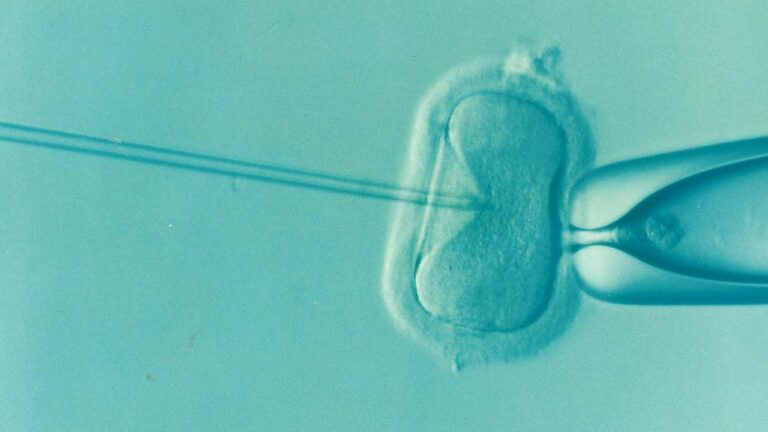Intrauterine insemination (IUI) is a common fertility treatment. This procedure involves placing washed and concentrated sperm into the uterus through a catheter.
The success of this procedure depends on many factors, including the number of sperm and their quality. The following is an overview of these factors: sperm count, sperm motility, fertility medications and age.
1. Sperm count
Before beginning IUI, the male partner must provide a semen sample for testing. A sperm analysis, also known as a semen count, evaluates the amount of motile sperm present in the sample and can help determine whether IUI is a suitable fertility treatment. Several factors can impact the results of a sperm count, including the volume of the sample, its concentration and motility, and the percentage of sperm with normal morphology.
The sperm count is usually measured in millions per milliliter after the semen has been “washed.” A sperm count higher than 10 million motile sperm (TMSC) is considered optimal for IUI.
The sperm sample is typically collected during masturbation in a sterile cup or with a collection condom during intercourse. In order to ensure accurate results, it is important that men abstain from ejaculation for three to five days before the test and to use the sample-collection device with care to avoid contamination. In addition, avoiding alcoholic beverages and recreational drugs can improve semen quality and motility. A healthy diet of fruits, vegetables and lean proteins may also increase sperm counts.
2. Sperm motility
Having a healthy count of sperm is important, but the sperm must be able to swim forward to meet the egg in order for conception to occur. Sperm motility is a measurement of how well the sperm move and can be tested using a simple test that can be performed at home.
Normal sperm motility is considered to be 40% or higher and ideally, the sperm should have progressive motility. This means that the sperm can move in a straight line and progress forward towards the egg. If the sperm have slow progressive motility, this is known as poor sperm motility.
In a sperm motility test, a sample of diluted semen is placed on a glass plate and allowed to liquefy for several minutes before a camera is used to photograph the sperm tracks. The sperm will leave a trail that is visible to the camera and non-progressive sperm will appear as a circular or abnormal pattern on the track. This test can be used to determine the percentage of sperm with progressive motility, as well as other measurements such as the sperm’s path velocity and amplitude of lateral head displacement.
3. Sperm quality
A sperm count is an important factor in the success of intrauterine insemination (IUI), which involves placing washed and concentrated sperm directly into the uterus through a catheter. However, sperm quality is equally important for IUI. In order for IUI to be successful, sperm must have sufficient motility to reach and fertilize the egg.
One way to determine a person’s sperm quality is to get a semen analysis. A semen analysis involves submitting a sample of semen that has been collected via masturbation to a lab for testing. The lab will then test the semen for sperm concentration, motility, and sperm morphology.
The quality of semen can be improved by following a healthy lifestyle and avoiding environmental pollutants that can harm sperm. Some of the most common pollutants include alcohol, drugs, and industrial solvents. In addition, stress can negatively impact sperm quality. Therefore, reducing stress by incorporating a stress-reduction practice like meditation and exercise may improve semen quality. Lastly, smoking and chronic inflammation can also affect sperm quality. It is therefore crucial for men to avoid smoking and to limit their exposure to toxins.
4. Fertility medications
The success rate of IUI depends on a number of factors, including the count and quality of sperm. Men with low sperm counts or poor sperm motility may have lower IUI success rates than other men. These factors can be addressed with fertility medications.
During IUI, the sperm sample is processed or “washed” in order to separate the healthy sperm from other components. The sperm count after this process is known as the total motile post wash sperm count. Ideally, this number should be above 10 million sperm per milliliter.
Fertility medications can also improve sperm count and motility. These drugs can be prescribed by your doctor to help you conceive. They are available in a variety of forms, including pills, injections and vaginal gels.
Sperm can also be frozen, allowing you to use them later in the future. Frozen sperm can be used in IUI, whether it is from your partner or a donor. All donated sperm is tested for infections and inherited diseases before it is used for IUI. The sperm can be shipped in straws of 0.5 millilitres, either IUI or ICI.
5. Age
In intrauterine insemination (IUI), a male partner or sperm donor provides a sample of semen. The semen is then “washed,” a process where healthy sperm are separated from the rest of the sample to increase the chances that they will reach and fertilize an egg. The semen is then inserted into the uterus through a catheter just before or after ovulation.
While IUI is less expensive and less invasive than IVF, it still has lower success rates per cycle. Many patients choose to do 3-6 IUI cycles before moving on to IVF because it will give them a better chance of getting pregnant.
However, pregnancy rates with IUI decline significantly with age. The best results are seen in patients under the age of 35. In women over the age of 40, the pregnancy rate with IUI drops to 5% or 15% per cycle. This is in part due to a decrease in the ovarian reserve, and it can be aggravated by age-related changes in the cervical mucus or the fallopian tubes. Several studies suggest that a maximum of two insemination cycles should be performed in women over the age of 45.
See Also:





